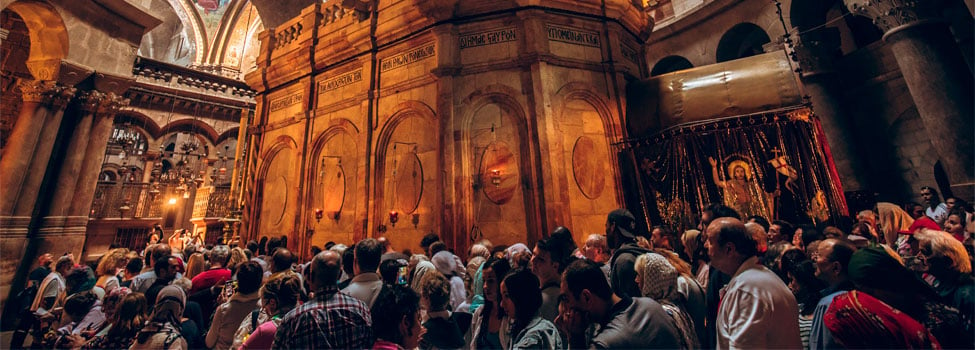New and exciting developments, such as the Tel Aviv Light Rail (known as the Dankal) which will eventually connect the Metropolitan regions across multiple lines, are ongoing alongside upgrades and projects to improve the public transportation system in Israel year-round, providing reliable options for both locals and tourists to travel at ease within the country.
How to Travel in Israel
Whether it’s inner or inter-city travel, Israel’s public transport will get you to your destination of choice.
Buses
Running on an extensive network system throughout the country, Israel’s public buses (including Afikim, Metropolitan, Dan, and Egged) connect riders to over a thousand routes, spanning short and long distances. Google Maps and the Moovit app will keep you on track with transit routes.
As for payment? Grab yourself a Rav-Kav card and tap for payment on board, which is available to purchase for 10.90 ILS (approx $3.50) at tourist information centers, the Rav-Kav Service Station at Ibn Gabirol St 35, train stations, and Ben Gurion Airport—just look for the purple smile logo! This card is used for electronic ticketing on many Israeli public transportation options and can be pre-loaded in convenience stores (‘pizuziot’ in Hebrew), loading stations across cities, and even directly via the Rav-Kav app. The cost per ride will vary depending on your destination.
Israel Railways
As the national train operator of Israel, Israel Railways offers a contemporary form of travel, especially useful for reaching coastal regions along the Mediterranean shoreline. Clean, air-conditioned trains, with free WIFI on board, run on a timely schedule. Tickets can be purchased in the station, loaded onto your Rav-Kav card, or even purchased via payment apps, allowing you to pay, scan and travel.
Taxis
As with cities around the world, taxis are readily available day and night. Your best bet for hailing a cab is with Israel’s Gett taxi app and ride-hailing app Yango, where fares are priced by the meter and charged directly to your pre-registered card (paying in cash is also an option). During peak hours, like Thursday and Friday nights, during holidays, and on rainy days, it’s more difficult to hail a cab in the street, and therefore the apps are your best bet! Whilst you are welcome to leave a tip, it’s not generally expected for taxis in Israel.
Sherut (Shared Taxi)
Israel public transport would not be the same without the intra-city and inter-city ‘sherut’, translated from Hebrew as ‘shared taxi’. These small yellow and white vans, seating up to 10, can be hailed anywhere along their designated routes and will drop you directly at any destination on its way. Be mindful, during peak travel times the sherut can fill fast and only stops if a seat is vacant. Simply pass your cash forward to pay onboard, with change provided by the driver.
Bicycles & Scooters
Both pedal bicycles and electric bike rentals are popular options for traveling shorter distances within a city, and an exciting way to discover the area at a leisurely pace. Not to mention, it’s how many of the locals get around! The self-service concept, such as Tel-O-Fun in Tel Aviv and Jerufun in Jerusalem, are available to book and pay via the apps. Miles of carved-out cycling paths have been created across cities for safety and ease of commuting.
Car Rental
Some regions in Israel are simply easier to reach by car. You can secure a rental online with various car providers and collect at multiple locations throughout Israel. Make sure to check what insurance is on offer and the individual opening hours of locations as car rentals are not generally open during the Sabbath (Friday to Saturday evening). If you’re traveling around Tel Aviv, Auto Tel, a car-sharing service that charges by the minute, may come in handy!
Public Transport on Sabbath
During the Sabbath or religious holidays, Israel Public transport does not run, apart from some bus routes which operate in Haifa. However, there are still many ways to get around the cities. The sherut continues to run (albeit at an increased cost) during the sabbath and taxis are also an option. Also, a fairly new inter-city weekend bus runs a limited service across seven lines in cities including Tel Aviv, Givatayim, and Ramat HaSharon.
Watch the following video for a great summary of all the apps you should download to successfully navigate Israel
Public Transport in Tel Aviv & Jerusalem
Tel Aviv and Jerusalem draw in millions of global tourists annually, and both cities are easy to navigate thanks to Israel’s public transport. Aside from what’s mentioned above, there are a few unique transportation aspects within both of these regions.
Scooters
Tel Aviv public transport would be incomplete without the city’s electric scooters, a preferred method of transport for many locals to reach A to B and avoid traffic. Bird, Wind and Lime scooters, stationed across the city, can be unlocked and paid for via their designated apps (price based per minute of use), with Bird also operating in Ramat Gan and Givatayim, and Wind in Ramat Gan, Givatayim, Bat Yam, Holon, Givat Shmuel, Kiryat Ono, Ashdod, and Petah Tikva.
Jerusalem Light Rail
Beginning its operation in 2011, the Jerusalem Light Rail is a staple of Jerusalem public transport, stretching on the one red line from Mount Herzl to the neighborhood of Pisgat Ze’ev, with extension plans underway. Electronic boards alert you to train times, with ticket machines available at each station. As with buses and trains, you can use your Rav-Kav on the Jerusalem Light Rail!
Bubble
The Bubble ride-sharing system by Dan has become another staple of Israel public transport in recent years, as a way to save on the cost of a taxi and reduce carbon emission. Simply download the Bubble Dan app, request a ride to your destination, and the black Bubble van will collect you from the nearest designated stop, dropping you off on route along with other riders. The cost is around 12-15ILS ($3.90-$4.80) for a single ride, making it more expensive than the bus but cheaper and just as convenient as a taxi.
Tel Aviv <-> Jerusalem
Connecting between the two cities is as simple as hopping on a bus, train, or sherut.
Bus
Buses depart from Tel Aviv Central Bus Station and Arlozorov Bus Terminal to Jerusalem Bus Station and run as often as every 10 minutes. Journey time usually takes less than an hour, depending on traffic, and is cost-effective at 18 ILS (approximately $5.70) one way or 30 ILS return (around $9.50). Keep in mind, the buses do not run during the sabbath.
Sherut
The Sherut will advertise its route on the window outside of the Tel Aviv Central Bus Station and depart when full, dropping you at its final stop in central Jerusalem at Zion Square, with stops in the city if required. Going the other way, the sherut is stationed on HaRav Kook Street near Zion Square and Jaffa Road by the Jerusalem Bus Station. The cost is around $7.50 during the week and $10.80 on the sabbath.
Train
In 2018, after a decade of planning and construction, Jerusalem’s underground Yitzhak Navon Station opened as a key development In Israel’s public transportation, located adjacent to the Jerusalem Bus Station. This new line offers a direct link between Jerusalem and Ben Gurion Airport in less than 25 minutes and now connects onto Tel Aviv’s four stations with a total journey time of 31-50 minutes, depending on which station you’re traveling to.
Traveling to and Around the North
Reaching the northern coastal plain, to the likes of Haifa, Akko, and Nahariya in Israel by public transport is a breeze on Israel Railway from Tel Aviv and also stations located further south, including Holon, Bat Yam, and Lod.
Getting to Tiberias and the Golan Heights is trickier by Israel public transport, but doable. Buses reaching both regions depart from Tel Aviv, Jerusalem, and other cities for an affordable price. For those embarking on the Jesus Trail, you can also reach the starting point in Nazareth by bus from Israel’s main cities. Once you reach these regions, inner-city buses and taxis will get you where you need to go.
Alternatively, why not explore the Sea of Galilee and tackle the Jesus Trail with Abraham Tours, designed to spotlight the historical and natural beauty of these regions!
Public Transport to Masada and the Dead Sea
The desert region can be more of a hassle to reach via Israel’s public transport. Rather than navigating multiple buses and to save on a lengthy journey, the most direct ways are to drive, taxi (although it can be expensive!), or book a private tour.
Book a Private Tour
Abraham’s regular tours to Masada, the Dead Sea, and Ein Gedi, which depart from both Jerusalem and Tel Aviv, offer the added benefit of towels and access to the beach at the Dead Sea!
The West Bank
Foreign nationals wishing to visit the West Bank via Israel public transport can do so by bus from the Damascus Gate Bus Station in Jerusalem, where buses depart to cities including Bethlehem (around 45 minutes) and Ramallah (just over an hour), as well as Jericho, Herbon and Nabalus. Alternatively, Abraham Tours offers multiple options departing from Jerusalem and Tel Aviv for those who prefer to explore the West Bank on a guided tour.
Getting to Eilat, Jordan & Sinai
There are a couple of ways to reach Eilat by public transport, including a (pre-booked) bus departing from various cities at set times throughout the day (with limited service during the sabbath). Journey time depends on your departing location, but as an example, the ride from Tel Aviv to Eilat can take anything from four to five and a half hours.
Or, you can hop on a quick 45-minute flight from Ben Gurion to Ramon International Airport with a regular schedule operating throughout the year. Upon arrival in Eilat, there are buses and taxis to transport you to the city center, with a journey time of 25-35 minutes.
Reaching Jordan
Whilst you can navigate your way from Eilat to Jordan independently via border crossings, perhaps the safest, most organized, and convenient way to travel to and within the city is with a tour. Abraham Tours offers Petra and Wadi rum packages departing from Tel Aviv, Jerusalem, and Nazareth for a competitive price, taking the hassle out of planning.
Reaching Sinai
Sinai can be reached quickly by bus from the Eilat Central Bus Station via Israel public transport to the Taba Border Crossing. On the Egyptian side, taxis are readily available to take you on to your next destination and generally cost between 300-700 Egyptian pounds (around $19-$45), depending on the distance.
Stay tuned for Abraham’s Sinai tours launching in the near future!




